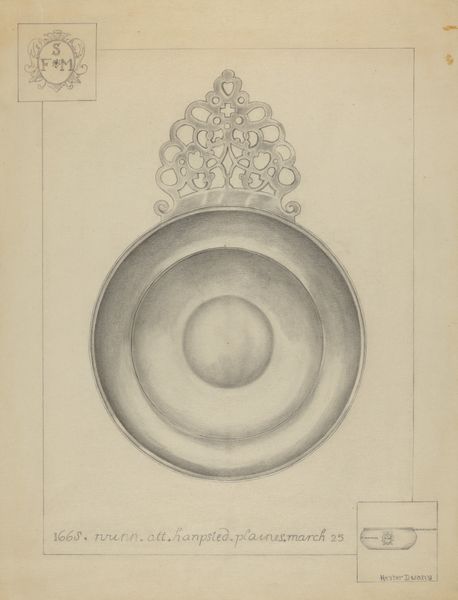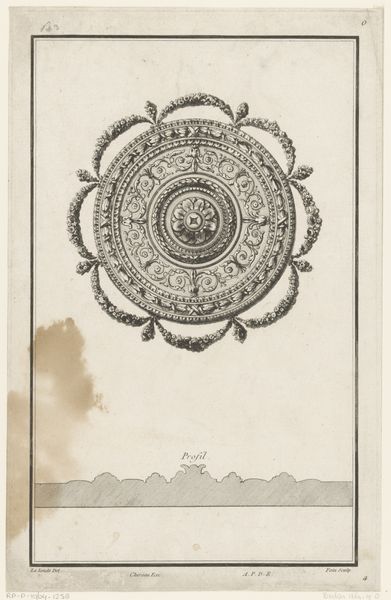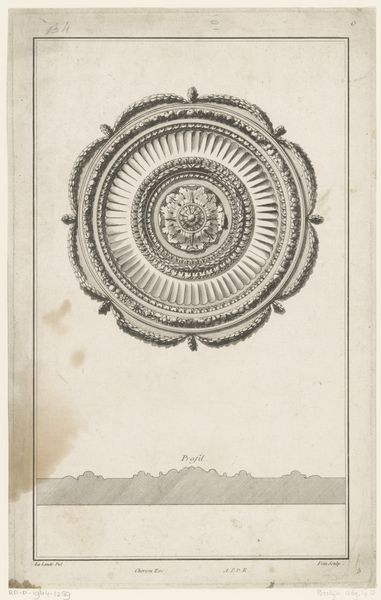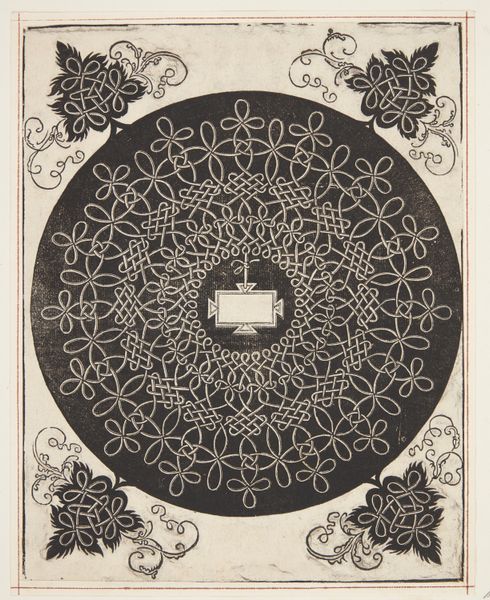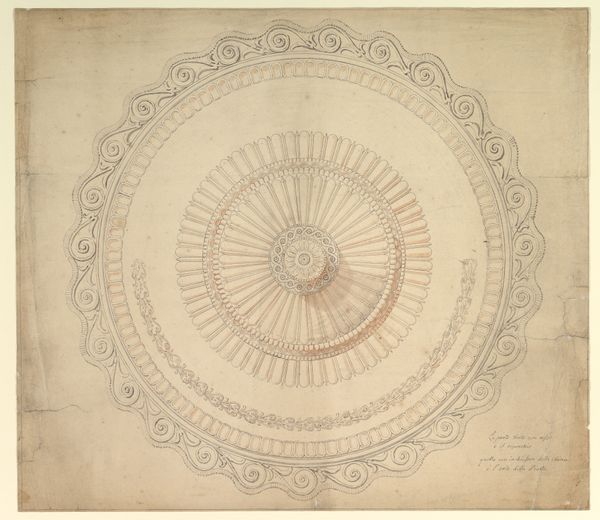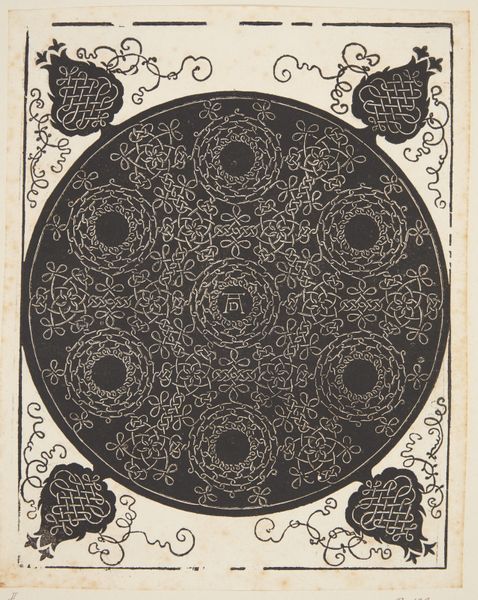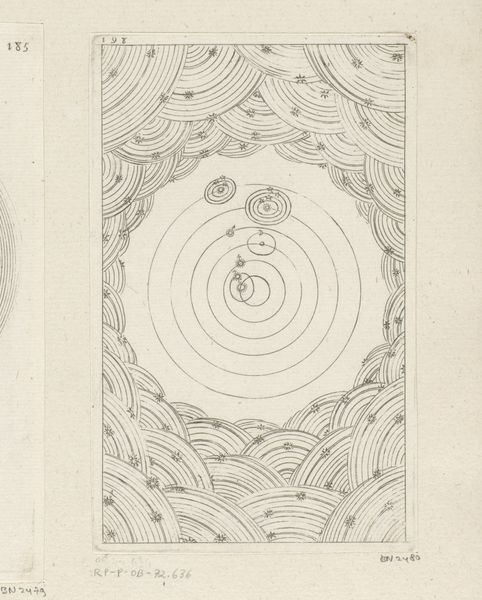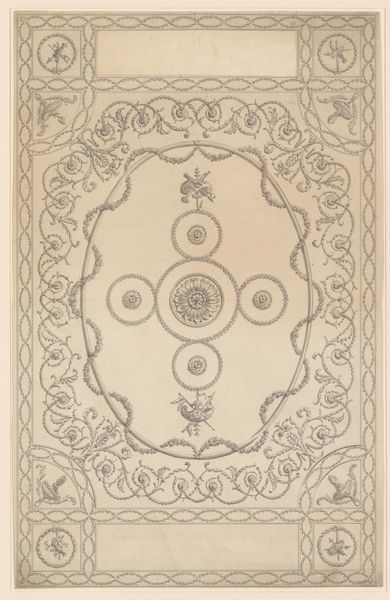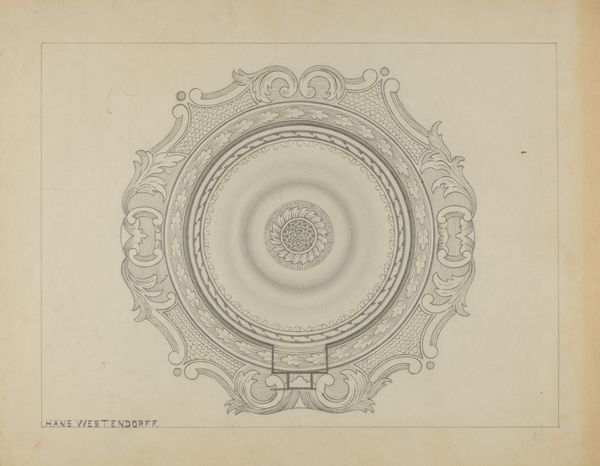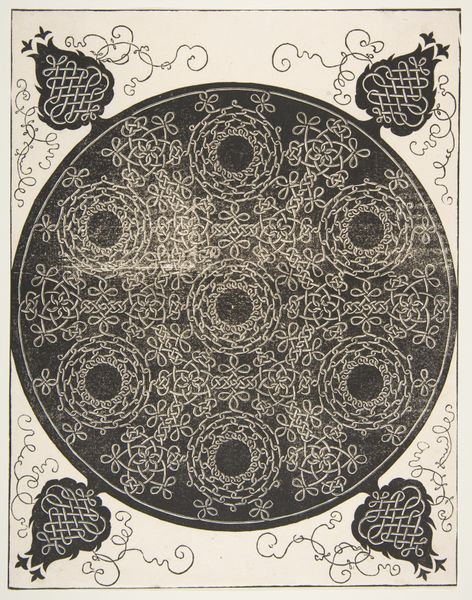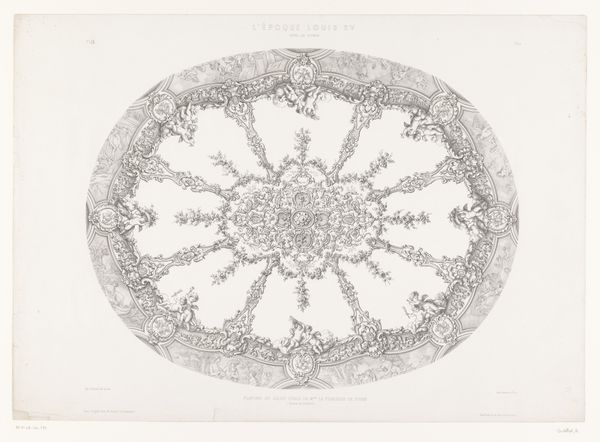
drawing, pencil, graphite
#
drawing
#
pencil drawing
#
pencil
#
graphite
#
academic-art
#
decorative-art
Dimensions: overall: 30.4 x 22 cm (11 15/16 x 8 11/16 in.)
Copyright: National Gallery of Art: CC0 1.0
Curator: My first impression? Formidable and strangely austere. I find the intricate graphite work mesmerizing, as if this silver tray, captured in two dimensions, could serve a noble purpose despite its monochrome stillness. Editor: I’m delighted you brought that up. What we have here is a drawing titled "Silver Tray," created around 1936 by Kalamian Walton. Note the decorative art style, rendered in graphite on what looks like drawing paper. Curator: Graphite lends it an old-world charm. The profusion of roses etched along the plate's rim, encircling the blank, seemingly endless core—I'm curious about what these florals would've symbolized back then. Was it common to incorporate floral emblems in household items to signal status? Or evoke certain memories around the table? Editor: Likely both, to a certain degree. These floral motifs were, and still are, emblematic of love and prosperity in many cultures. Remember the power of associations: imagine this tray piled with grapes. I suppose it could indicate bountiful harvests, good fortune... maybe even family celebrations. Curator: Now that I examine the drawing more closely, there appears to be an uncanny symmetry at play. Note how the artist has rendered a partial view of the tray, lying horizontally underneath the top view. It almost acts as an echo. Editor: An excellent observation! That horizontal sliver underscores the plate's structure, highlighting how its ornamentation would interact with light and space in a real domestic environment. It acts like a blueprint of luxurious potential, translated with immense precision by pencil. Curator: I get the sense that this particular plate—a functional item now frozen in art—was created to foster emotional connections and memories. Editor: Perhaps this drawing did serve to connect past, present, and future in Walton's mind? Capturing its essence and enabling our contemplation nearly a century later.
Comments
No comments
Be the first to comment and join the conversation on the ultimate creative platform.
